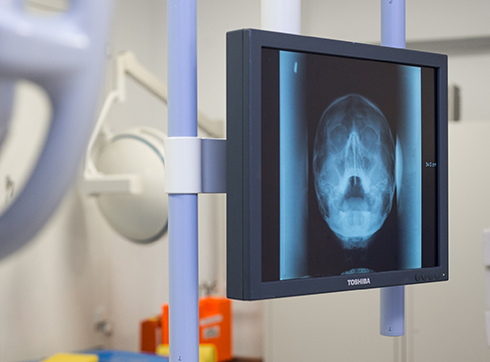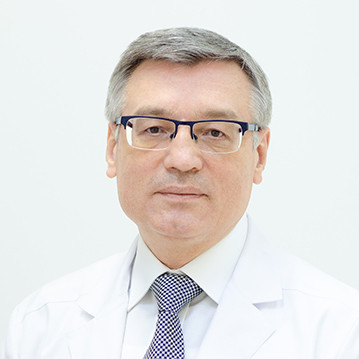
Tumors of the head and neck is a large category of diseases that includes formations located in the oral cavity, larynx, throats. This also includes oncological diseases of the salivary glands, nose, paranasal sinuses and thyroid cancer. Tumors may involve the lips, skin, bone, mucous membranes, nasal cavity, or paranasal sinuses. They are able to form in epithelial cells, connective, nervous or melanin-forming tissue.
Head and neck cancers are malignant tumors in designated areas. In most cases, this is squamous cell carcinoma, that is, a cancerous tumor from epithelial cells. If the head cancer started in the epithelium but has invaded the layers below it, then it is an invasive squamous cell carcinoma. If head or neck cancer originates in the salivary glands, then it is called adenocarcinoma, adenoid cystic carcinoma, mucoepidermoid carcinoma.
Among all cancers, head and neck tumors account for approximately 20%. But about 8% of male patients and about 5% of female patients suffer from head and neck cancer in Russia. Head and neck tumors can be aggressive, metastatic, and difficult to treat. They most often affect people over 50 years of age. Oncological diseases with head and neck tumors include: laryngeal cancer, nasal cavity cancer, oral cavity cancer, nasopharynx or oropharynx cancer, tongue cancer, paranasal sinus cancer, salivary gland cancer, etc.
Tumors of the head and neck do not include tumors and cancers of the eyes, brain, and lymphatic system.
The treatment of head and neck tumors involves doctors of narrow specialties, such as dermatologists, endocrinologists, otolaryngologists, surgeons, dentists, oncology specialists, etc. Our clinic has doctors of all the necessary profiles. Give us a call or sign up online and we'll get back to you as soon as possible.
Among the risk factors for developing head and neck tumors:
- smoking, drinking alcohol and chewing tobacco;
- poor oral hygiene, rinsing with alcohol-based mouthwashes;
- genetic predisposition and the presence of a similar diagnosis in relatives;
- Epstein-Barr virus, human papillomavirus (HPV) and some others;
- systematic consumption of too hot food;
- radioactive and ultraviolet radiation;
- hazardous production, where there is a risk of contact with chemicals, soot, dust, paint, etc.;
- diseases of the gastrointestinal tract, beriberi, problems of the immune system.
Symptoms of head and neck tumors
In the initial stages, oncological diseases rarely make themselves felt by changes in the state of health. But the head and neck tumors themselves are visible visually in 70% of cases, therefore they are detected during the examination of the patient. Common symptoms of head and neck cancer include:
- small lump or sore that won't heal;
- painful sensations when swallowing, which indicates the development of an inflammatory process;
- permanent hoarseness of voice, impaired speech;
- mucous discharge from the nose;
- sore throat;
- deformity of the neck or face;
- bulging eyes;
- nose or ear congestion;
- An unpleasant odor caused by necrosis (observed in the last stage).
Symptoms of head and neck cancer may also include: nausea, red or white plaque, nasal congestion or bleeding, hearing loss, bumps, ulcers, wounds that do not heal, weight loss, pain, and other discomfort in the head and neck that do not pass.
An important sign of head and neck cancer is swollen lymph nodes, speech disorders, changes in hearing, vision, smell that do not go away for several weeks and are not associated with a respiratory disease. All these symptoms of head and neck cancer can resemble a cold or an allergic reaction, which is why patients with this cancer often seek help too late, when the head or neck cancer is already in its advanced stages.
But in general, the clinical picture depends on the location of the tumor, the stage of head or neck cancer, and other factors. If you experience burning or sore throat or tongue, hoarseness, and this does not go away within 2-3 weeks, you need to be examined. If you are experiencing any of the symptoms, please leave your phone number and we will contact you to schedule an appointment with an oncologist.
The most common types of head and neck cancer are:
- Cancer of the lip - in most cases, it affects men and is located on the lower lip. This is, as a rule, squamous cell carcinoma (the tumor develops from epithelial cells), which is easy to identify in the early stages, and therefore the treatment prognosis is very optimistic. Lip cancer is preceded by frequent cracks in the lips, excessive thickening of the epidermis (hyperkeratitis). atosis), warty precancer and some other precancerous conditions.
- Cancer of the oral cavity - in about half of the cases it is cancer of the tongue, the second most common is cancer of the floor of the mouth. It may be preceded by hyperkeratotic lupus erythematosus, leukoplakia, lichen planus. Cancer looks like an ulcer or induration, the tumor may protrude above the mucosa. Most often it is a squamous cell carcinoma or, less commonly, a glandular cell tumor (adenocarcinoma). The disease can be imperceptible, quickly metastasize to the lymph nodes. But in the early stages, the patient shows symptoms such as discomfort or pain, then it becomes difficult to swallow and talk, ulcers and bleeding appear.
- Salivary gland cancer is a rare disease among head and neck tumors and occurs in 3-5% of cases. Most often, the disease captures the large parotid glands. Cancer has forms such as mucoepidermoid or acinar cell carcinoma, cylindroma, or adenocarcinoma. Gives metastases to the lymph nodes, in some cases spreads to the bones and lungs. There are often no symptoms other than compaction, but with metastasis, facial paralysis (paresis) may occur.
- Cancer of the larynx and pharynx is a rare disease among malignant tumors, but among head and neck tumors it occurs in 12% of cases (cancer of the pharynx). Less dangerous disease of the vocal cords - the tumor grows slowly and usually does not metastasize. More aggressive is cancer of the upper larynx. Signs are perspiration, feeling of a foreign body, pain during swallowing, hoarseness if the patient's vocal cords are affected. Cancer of the pharynx quickly metastasizes. Laryngeal cancer is difficult to detect in the early stages, as it can be asymptomatic.



































